Metasequoia glyptostroboides ‘Gold Rush’ (Gold Rush Dawn Redwood)
€225.00 – €280.00Price range: €225.00 through €280.00
SKU: N/A
Categories: All Trees, All Trees & Plants, Autumn Interest Trees, Conifers, Deciduous Trees, Rootballed Trees
Tags: Conifer, deciduous, Gold Rush Redwood, golden-yellow, hardy, Metasequoia glyptostroboides, Redwood, rootballed tree, Wet conditions
Frequently Bought Together

+
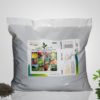
+
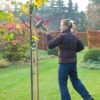
Total: €55.00
Description
Quick Facts
- Common Name: Gold Rush Dawn Redwood, Golden Dawn Redwood
- Botanical Name: Metasequoia glyptostroboides ‘Gold Rush’
- Plant Type: Deciduous conifer tree
- Mature Height: 21-24m (smaller than species)
- Mature Spread: 8-9m
- Flowering Period: Insignificant flowers
- Flower Colour: N/A (grown for foliage)
- Foliage: Bright golden-yellow feathery foliage, turning orange-bronze in autumn
- Hardiness: RHS H6 (fully hardy throughout UK and Ireland)
- Soil Requirements: Moist, well-drained, fertile soil; tolerates wet conditions
- Aspect: Full sun to partial shade (best colour in full sun)
- Maintenance: Low
Description
Experience the breathtaking beauty of Metasequoia glyptostroboides ‘Gold Rush’, one of the most spectacular golden-foliaged deciduous conifers for gardens, where luminous bright yellow feathery foliage creates year-round drama from spring through autumn, transforming gardens into glowing golden features that capture sunlight magnificently and bring radiant warmth to landscapes with exceptional elegance and prehistoric grandeur. This exceptional cultivar offers remarkable qualities—brilliant golden-yellow soft feathery foliage emerging bright chartreuse-yellow in spring and maintaining luminous golden tones throughout summer creating constant radiant presence that glows in sunlight, spectacular autumn transformation to rich orange, amber, and bronze tones before needles drop creating second season of fiery colour, elegant conical to pyramidal form with strong central leader and gracefully layered horizontal branching creating architectural presence and formal symmetry, fast vigorous growth establishing impressive presence quickly making it perfect for creating impact within just a few years, and exceptional adaptability thriving in moist to wet soils including heavy clay and waterside positions where many trees struggle, making this one of the most dramatic and rewarding choices for adding luminous golden foliage, architectural form, and multi-season colour to specimen plantings, waterside gardens, avenues, and anywhere a truly unforgettable golden foliage tree is desired to create year-round radiant impact and prehistoric character.
Throughout the seasons, this captivating tree displays its most spectacular features from spring through autumn—the soft feathery foliage emerges in spring as brilliant chartreuse-yellow to bright golden-yellow creating luminous displays that glow like captured sunshine, each delicate needle-like leaf arranged in opposite pairs along deciduous branchlets creating feathery texture reminiscent of ferns or ancient prehistoric forests. The foliage is soft to touch (unlike sharp evergreen conifers) and moves gracefully in breezes creating shimmering golden curtains of light. Throughout summer, the golden-yellow colour intensifies and deepens, maintaining brilliant luminous tones that create constant focal point and bring warmth to gardens—the colour is most intense in full sun positions where the tree literally glows, though partial shade produces softer golden-lime tones still beautiful and luminous. The elegant conical to pyramidal form develops naturally with strong central leader and gracefully tiered horizontal branches creating formal symmetry and architectural presence—the layered branching pattern showcases the golden foliage to perfection with each tier creating horizontal planes of colour. In autumn (October-November), the foliage undergoes spectacular transformation turning rich shades of orange, amber, coppery-bronze, and russet creating fiery displays before needles drop—this second season of colour rivals the spring and summer golden tones for drama and beauty. Following leaf drop, the elegant branch structure is revealed—attractive reddish-brown fibrous bark on the trunk becomes increasingly fissured and textured with age, and the graceful tiered branching creates beautiful winter silhouette. The overall effect throughout the growing season is luminous, dramatic, and prehistoric—like having a living golden sculpture or ancient redwood forest relic glowing in your garden.
Native to remote valleys in central China where it was discovered growing wild in 1941 (previously known only from fossils and thought extinct for millions of years—one of the most exciting botanical discoveries of the 20th century!), Metasequoia glyptostroboides is often called a “living fossil” as it’s the sole surviving species of a genus that thrived globally during the age of dinosaurs. The genus name Metasequoia means “like Sequoia” (the giant redwoods of California), while glyptostroboides means “resembling Glyptostrobus” (Chinese swamp cypress). The species was introduced to Western cultivation in the late 1940s and quickly became beloved for its elegant form, feathery foliage, fast growth, and remarkable adaptability. The cultivar ‘Gold Rush’ was selected and introduced in the 1990s specifically for its outstanding bright golden-yellow foliage—it represents a significant improvement over the species which has fresh green foliage, bringing year-round luminous colour while maintaining all the desirable characteristics of fast growth, elegant form, and adaptability. ‘Gold Rush’ is more compact than the species (which can reach 25-40m), making it more suitable for medium to large gardens. Hardy to RHS H6, this robust tree thrives throughout UK and Ireland with complete reliability, tolerating cold winters, wet conditions, and variable weather. Fast vigorous growth rate, adding 40-60cm annually once established, quickly creating substantial presence and reaching impressive size within 10-15 years. Particularly valuable for exceptional moisture tolerance—thrives in moist to wet soils, beside ponds and streams, and in heavy clay where many trees struggle, making it perfect for challenging waterside positions. Also tolerates urban pollution and exposed positions. The deciduous nature (unusual for a conifer) means it’s not evergreen, but the golden foliage from spring through autumn and spectacular autumn colour provide extended seasonal interest.
Create stunning compositions by planting as magnificent specimen tree on lawns where its luminous golden foliage and elegant pyramidal form create focal point and year-round drama, positioning beside ponds, streams, or water features where its moisture-loving nature excels and golden foliage reflects beautifully in water creating doubled impact, or using in avenue plantings or repeated along driveways where multiple trees create glowing golden tunnels and formal rhythm. Exceptional in large mixed borders as backdrop where the golden foliage provides luminous background for darker greens and contrasting colours, contemporary gardens where the architectural form and brilliant colour create bold modern statement, or woodland gardens where the feathery golden foliage and prehistoric character fit perfectly with naturalistic plantings. Works beautifully planted as single specimen where the tree develops full form and creates maximum golden impact, in groups of three for substantial presence and layered effect, or combined with contrasting foliage—dark evergreens (yew, holly, photinia) that emphasize the golden colour, purple-leaved trees (Prunus cerasifera ‘Nigra’, Fagus sylvatica ‘Purpurea’) for dramatic colour contrast, or blue-toned conifers (Picea pungens ‘Hoopsii’, Cedrus atlantica ‘Glauca’) for complementary cool-warm contrast. Also magnificent underplanted with shade-tolerant perennials (hostas, ferns, epimediums) that thrive beneath the light canopy, or surrounded by spring bulbs (daffodils, bluebells) that bloom before tree fully leafs out. Perfect for adding luminous golden foliage, architectural form, and multi-season colour to specimen plantings, waterside gardens, avenues, and anywhere a truly unforgettable golden foliage tree is desired to create year-round radiant impact and prehistoric grandeur.
Caragh Garden Notebook
Planting: Space trees 6-8m apart for individual specimens allowing room for mature spread, or 5-6m apart for avenue plantings where canopies will eventually touch. Plant bare-root specimens November-March during dormancy (ideal for best establishment), or container-grown specimens year-round though autumn or early spring is preferred. Choose position in full sun for most intense golden-yellow colour—tolerates partial shade but colour will be softer golden-lime and growth may be slightly slower. Thrives in moist positions and tolerates wet soils—perfect beside ponds, streams, bog gardens, or in heavy clay that remains moist. Dig generous planting hole at least twice width of root ball and same depth. Unlike most trees, Metasequoia tolerates and even prefers moist to wet conditions, so no need to improve drainage—in fact, this tree excels where drainage is poor. Incorporate organic matter (well-rotted compost, leaf mould) into backfill soil to improve fertility. Plant at same depth as nursery soil mark on trunk—avoid planting too deeply. Backfill carefully, firming soil gently. Water thoroughly after planting. Apply 5-8cm mulch of organic matter around base in 1m diameter circle, keeping mulch clear of trunk (10cm gap). Stake securely using single stake or double stakes with crossbar for larger specimens—use tree ties with spacers. Stakes support tree for first 2-3 years. Water regularly during first growing season (though this tree tolerates wet conditions better than most). Position where the luminous golden foliage can be appreciated and where tree has room to develop elegant pyramidal form.
Soil Preparation: Tolerates wide range of soil types including heavy clay, loam, sandy soils, and particularly wet or waterlogged soils where most trees fail—this is one of the best trees for challenging wet conditions. Prefers neutral to slightly acidic pH (5.5-7.0) but adapts to most garden soils including slightly alkaline conditions. CRITICAL: Requires consistent moisture—avoid very dry soils or exposed positions where soil dries out, as this tree naturally grows beside water in its native habitat and struggles in drought. Thrives in moist to wet conditions including heavy clay that remains waterlogged, beside ponds and streams, and in low-lying areas with poor drainage—these challenging conditions are ideal for Metasequoia. Improve very dry sandy soils by adding generous amounts of organic matter to improve moisture retention, or choose different location with better moisture availability. Mulch annually in spring with 5-8cm layer of organic matter (compost, leaf mould) in 1m diameter circle around base to conserve moisture, suppress weeds, and improve soil fertility. Keep mulch clear of trunk. Best growth and golden colour occur in full sun with consistently moist to wet soil—these conditions produce the most vigorous growth and most intense golden-yellow foliage.
Container Growing: Not suitable for long-term container growing due to fast vigorous growth, large mature size, and high moisture requirements—this is a substantial tree requiring in-ground planting for proper development. Young specimens can be grown in very large containers (minimum 80-100cm diameter) for 2-3 years before requiring permanent planting, but will not thrive long-term in containers due to moisture needs and vigorous root system. If growing temporarily in containers, use soil-based compost, water very regularly (daily in summer), and plan to plant in ground within 2-3 years.
Seasonal Care: Requires minimal pruning—the naturally elegant pyramidal form with strong central leader develops without intervention. Prune only to remove dead, damaged, or crossing branches, or to maintain single central leader if competing leaders develop. Carry out any necessary pruning in late winter (February-March) before growth begins. Remove lower branches gradually over several years if desired to create clear trunk that showcases the elegant tiered branching, but avoid removing too much in one year. Apply general-purpose balanced fertiliser or blood, fish and bone in spring around base to promote healthy vigorous growth and intense golden colour. Mulch annually in spring. Water regularly during dry spells, particularly during first 3-5 years of establishment—this tree requires consistent moisture and struggles in drought, so water thoroughly during dry periods even when established. In waterside or naturally moist positions, additional watering is rarely needed. Watch for aphids on new growth (spray with water or encourage natural predators). Generally pest and disease free—this is a remarkably trouble-free tree with excellent resistance to diseases and pests. The soft deciduous needles drop in autumn (unlike evergreen conifers)—this is normal and creates beautiful carpet of golden-bronze needles beneath tree. The golden foliage colour is reliably spectacular from spring through autumn!
Propagation: Can be propagated from softwood or semi-ripe cuttings taken in summer (June-August) with moderate success rate—take 10-15cm cuttings from current season’s growth, remove lower foliage, dip in rooting hormone, and insert into free-draining compost in sheltered position. Rooting takes 8-12 weeks. Can also be propagated from seed, though seedlings take many years to reach substantial size and ‘Gold Rush’ cultivar characteristics may not come completely true from seed—vegetative propagation (cuttings) is preferred to maintain golden foliage. Home gardeners can propagate this tree, though nursery-grown specimens provide more immediate impact and guaranteed golden colour intensity.
This spectacular beauty is absolutely breathtaking—one of the most luminous golden-foliaged trees available! That brilliant golden-yellow soft feathery foliage emerging bright chartreuse in spring and maintaining radiant golden tones throughout summer is absolutely stunning—glowing like captured sunshine! Spectacular autumn transformation to rich orange, amber, and bronze creating second season of fiery colour. Elegant conical pyramidal form with gracefully layered horizontal branching creating architectural presence. Fast vigorous growth adding 40-60cm annually—impressive presence within just years! Exceptional moisture tolerance—thrives in wet soils, beside water, and in heavy clay where most trees struggle, making it perfect for challenging waterside positions! Fully hardy (RHS H6) throughout UK and Ireland. Deciduous conifer—needles drop in autumn creating beautiful golden-bronze carpet. Best golden colour in full sun with consistently moist soil. Perfect for specimen plantings, waterside gardens, avenues, large borders, and anywhere you want luminous golden foliage with architectural form and prehistoric grandeur. Pure radiant magnificence and living fossil drama!
Related products
-

Taxus baccata / Yew Hedging
€5.50 – €115.00Price range: €5.50 through €115.00 Select options This product has multiple variants. The options may be chosen on the product page -
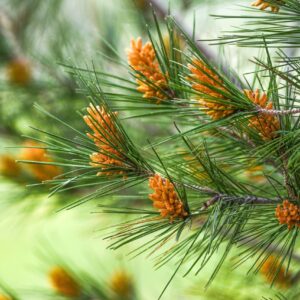
Pinus radiata
€350.00 – €480.00Price range: €350.00 through €480.00 Select options This product has multiple variants. The options may be chosen on the product page -
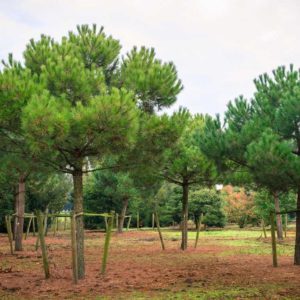
Pinus pinea
€395.00 – €805.00Price range: €395.00 through €805.00 Select options This product has multiple variants. The options may be chosen on the product page -
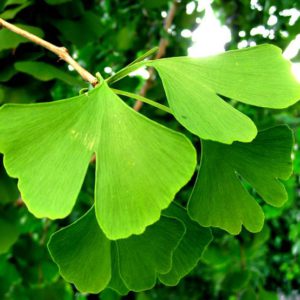
Ginkgo biloba
€220.00 – €2,200.00Price range: €220.00 through €2,200.00 Select options This product has multiple variants. The options may be chosen on the product page

